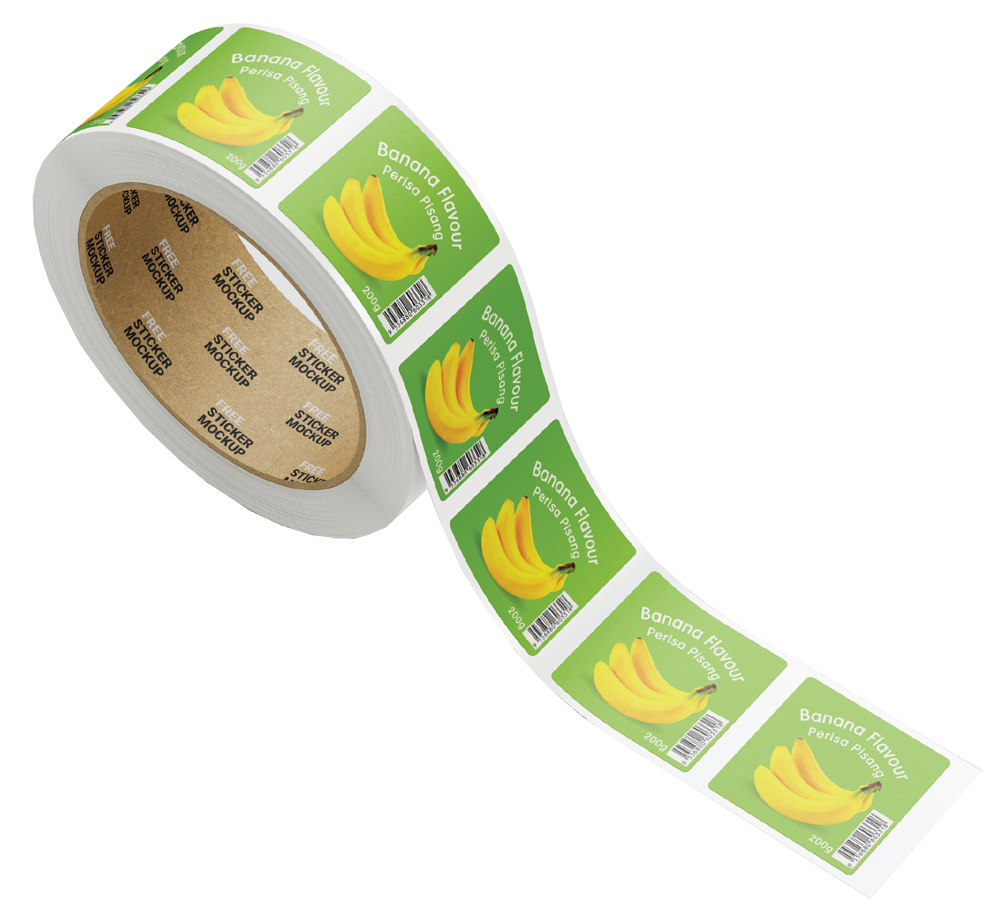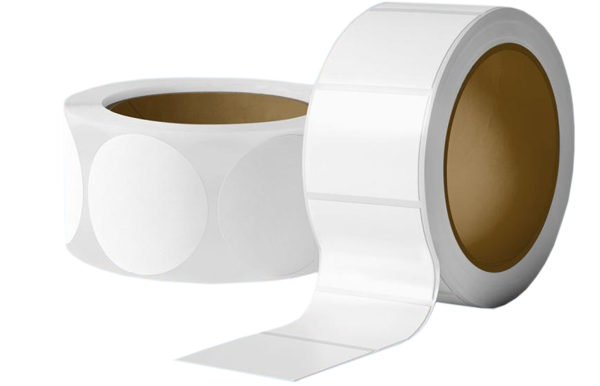Blank & Pre-printed Label Stickers
At Waltvest, we specialise in producing premium-quality label stickers solutions for businesses of all sizes in Malaysia. As a leading custom label stickers manufacturer in Malaysia, we use top-grade materials to ensure durability, longevity, and superior print clarity. Whether you need product label stickers, barcode labels, custom sticker printing, or specialised industrial labels, we offer a comprehensive selection tailored to your brand's unique requirements.

Enhance Your Branding with High-Quality Label Stickers Malaysia Printing
Bring your designs to life with Waltvest’s advanced label stickers Malaysia printing services. As one of the top custom label stickers printing providers in Malaysia, we combine the right materials with modern printing techniques and protective finishes to deliver long-lasting, high-performance labels.
We take pride in providing personalized label stickers printing service to each of our clients, ensuring that their orders are completed on time and to their satisfaction. At Waltvest, we do not just print labels and stickers—we help businesses build their brand and stand out in a competitive market.

Custom Label Stickers Print Finishing Solutions


Wine Bottles
Wine label printing in Malaysia contributes significantly to its presentation. Visually striking wine labels provide consumers with basic information; the grape varietals used, region of origin, vintage, tasting notes, and food pairing recommendations. These product labels help customers to make educated decisions and choose wines according to their tastes.
Engaging a professional custom label stickers printing service in Malaysia ensures your wine bottles feature high-quality, custom designs that reflect the essence and quality of your product. With expertly crafted bottle label printing, your wine not only stands out but also communicates your brand’s story and values at a glance.
Achieve a point of differentiation through custom label printing — premium-quality custom label stickers create a distinctive identity for your brand on store shelves. This enhances brand visibility, builds consumer trust, and strengthens brand messaging in a competitive retail landscape
Household Products
Printing label stickers can help you keep your household products organized. Custom sticker labels allow you to efficiently organize your pantry items, storage containers for seasonal clothes or holiday decorations, as well as your children’s toys, books and school supplies. This not only decreased clutter but helps your kids develop valuable organizational skills as well as take responsibility for their things.
With professional label stickers printing services in Malaysia, such as personalised label printing or customised sticker printing, you can maintain a tidy and well-arranged home. Reliable label printing in Malaysia ensures high-quality results, giving your daily routines a smoother, more enjoyable flow for the entire family.
Industrial Setting
Improve workplace safety and procedures with custom label stickers printing in Malaysia. Businesses can utilise high-quality, weather-resistant custom printed labels on machinery, tools, hazardous materials, and storage zones to ensure everything is clearly marked and compliant with safety regulations. This allows employees to quickly identify equipment, possibilities for risk exposure and follow proper safety labelling protocols — leading to a dramatic decrease in accidents and an increase in productivity. Rely on trusted label printing services in Malaysia to keep your operations clearly, compliantly, and organized.
Personal Care Products
If you have a disinfection or personal care product, it’s crucial to use clear, accurate, and high-quality labels. Choosing custom label stickers printing in Malaysia ensures your product labelling includes essential information such as ingredients, directions for use, and safety precautions. This helps consumers use your product correctly, minimising the risk of misuse or harm.
When selecting the best label stickers printing Malaysia service, opt for providers that offer custom labels with durable materials and professional label design. High-quality sticker printing services are essential for disinfection products, ensuring the label communicates the right message while complying with local standards and regulations.
For personal care items, professionally printed stickers play a vital role in helping customers make informed choices. Clear labels with ingredient lists and application instructions can reduce the risk of allergic reactions and improper usage. By working with trusted label stickers printing Malaysia companies, your products will not only meet compliance but also build consumer trust through accurate and responsible product labelling.
Chemical Setting
As a crucial element of workplace safety and regulatory compliance, custom label stickers printing in Malaysia provides a reliable solution for clearly displaying chemical information.Customised label stickers are essential, particularly for hazardous materials, enabling employees to quickly identify substances, understand associated risks, and take appropriate action.
Investing in high-quality custom label stickers printing services in Malaysia ensures chemical storage areas are well-organised, allowing staff to locate materials efficiently. This not only minimises the risk of accidents but also enhances overall productivity. Professionally printed, compliant label stickers support adherence to safety regulations, industry standards, and workplace best practices.
For a safer and more streamlined environment, install durable, cost-effective custom label stickers printing solutions throughout your facility. Doing so can significantly reduce the risk of injury, prevent costly regulatory fines, and maintain operational efficiency
Lubricant
Ensure optimal performance in your lubricant operations with state-of-the-art custom label stickers printing Malaysia services. Readily printable labels should clearly display crucial information such as lubricant types, grades, safety symbols, and usage instructions. This allows employees to correctly identify and handle products efficiently, reducing equipment damage, limiting downtime, and enhancing workplace safety.
High-quality custom label stickers enhance workplace organisation by marking storage areas for lubricants and labelling machinery, making it easier for staff to locate and use items safely. This not only improves workflow but also reduces the risk of accidents. In industries where compliance is critical, using durable and waterproof labels helps meet Malaysian industrial standards, regulatory requirements, and safety guidelines.
By investing in professional custom label stickers printing in Malaysia, businesses can achieve a secure and streamlined operation while avoiding costly fines due to mislabelling or equipment misuse. With a wide range of label materials and finishes available, printed labels ensure long-term clarity, reliability, and compliance in demanding environments.
Pharmaceutical
Identifying medication types, dosages, and instructions for use through professionally printed labels helps patients avoid errors and adverse reactions. By investing in custom label stickers printing in Malaysia, healthcare facilities can improve label clarity and readability, ensuring that both patients and medical professionals have timely access to critical information.
Furthermore, custom pharmaceutical labels support the organisation of medicine storage areas and equipment, allowing healthcare staff to quickly locate essential supplies. This enhances workflow efficiency, minimises mistakes, and improves overall patient care. Durable and high-quality label stickers also ensure compliance with government regulations and industry standards. With professional sticker printing services in Malaysia, pharmaceutical companies and healthcare providers foster a safer environment that reduces medication errors, prevents adverse drug events, and helps avoid regulatory penalties.
Grocery
You can provide essential product information to your customers—such as ingredients, nutritional values, usage instructions, and allergen warnings—through professional label stickers printing in Malaysia. For instance, food packaging often features clear, well-designed labels that are easy to read, allowing customers to quickly identify key details and make informed dietary choices.
High-quality custom label stickers printing plays a vital role in ensuring that allergen warnings are prominently displayed, helping individuals with specific dietary restrictions avoid potential health risks. These labels not only enhance consumer safety but also ensure compliance with labelling regulations in Malaysia.
By investing in reliable custom label stickers printing services, businesses can improve product presentation, boost brand trust, and create a seamless and transparent shopping experience. Thoughtfully designed product labels also reflect professionalism and help establish credibility in the competitive packaging and labelling industry in Malaysia.
 Waltvest can design and print labels for personal care products such as shampoos, lotions, cosmetics, and more. We offer various label stickers printing options, including full-color printing, foil stamping, and embossing, to make your custom labels stand out.
Waltvest can design and print labels for personal care products such as shampoos, lotions, cosmetics, and more. We offer various label stickers printing options, including full-color printing, foil stamping, and embossing, to make your custom labels stand out.